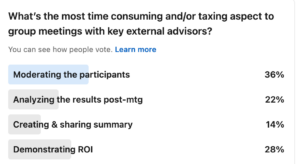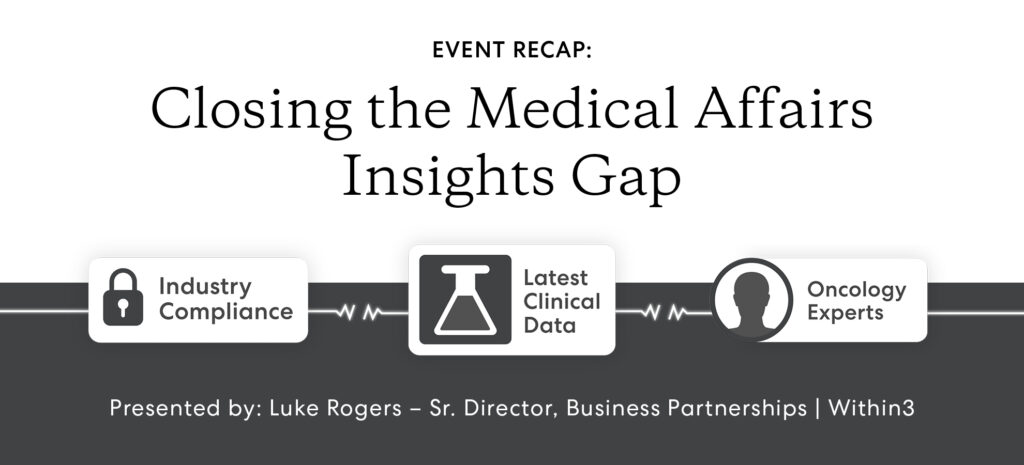By Trey Riley, Vice President, Sales Engineering at Within3
Group engagements with external experts are critical to insights collection – from KOL engagement to gathering patient input, pharma teams use these gathered insights to inform strategic decisions during the drug commercialization process. These key medical affairs activities include elements that increase expenses, add to inefficient workloads, and are time-consuming, diminishing the efforts needed for more strategic work.
Within3’s technology reduces workloads by up to 90%, freeing medical affairs teams to focus on strategic decision-making. Our Moderator Assistant and insights reporting capabilities were developed specifically to create efficiencies and reduce expenses for medical affairs teams.
To understand how our capabilities align with customer needs, I wanted to know what aspects of group engagement were most taxing to medical affairs teams, so I asked them directly: What’s the most time-consuming or taxing aspect of group meetings with key external advisors?
I wasn’t surprised to see that most of the responses – 72% – named activities related to executing the engagement: moderation, analysis and reporting results, and creating and sharing a summary of the full session.
And while I asked which activities take the most time, all of these activities incur hidden costs, making these tasks not only the most time-consuming but potentially the most costly. Multiplying the cost of employee time spent moderating and conducting post-engagement analysis – for each engagement, all year long – makes moderation and analysis a significant cost center for a medical affairs team.
The challenge of ROI
While I expected that many respondents would call out moderation and analysis as time-consuming, I was surprised that nearly a third said that producing a return on investment was the most difficult. Typically, pharma teams are primarily concerned with executing the engagement from a logistical standpoint, getting answers quickly, and making critical decisions before considering if the results will demonstrate positive ROI.
At Within3, we’re aware of this, and we use an approach that helps teams see the hidden costs of activities like engagement moderation and analysis and how advanced AI-driven technology proves the ROI of investing in that technology.
Embracing the potential of AI
Our approach to solving this problem – saving clients time and helping them prove ROI – includes our AI-powered technology, which enhances moderation while capturing higher quality feedback during engagements and analysis and reporting afterward.
At Within3, we employ human curation and oversight to optimize the accuracy of captured insights that were planned and unprompted findings. In this way, AI doesn’t replace human expertise. Rather, it frees experts to focus on the strategic work that’s so important in drug development, launch, scientific education, and improving patients’ lives.
You can read more about AI-powered moderation on the Within3 blog. To speak with one of our experts and understand how technology can reduce manual analysis, lower costs, and help you prove ROI, book a demo.







